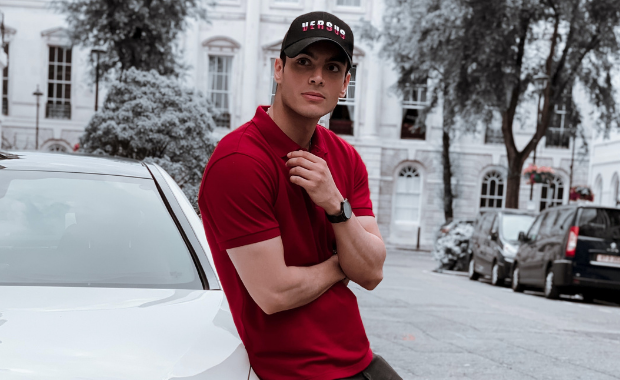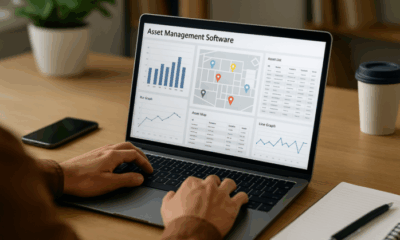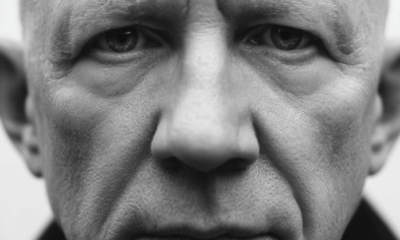Success Advice
How Influencers Can Monetize Their Social Assets for Long-Term Earnings

Over the years I have worked with many A-list celebrities, helping to monetize their social assets. The relationships I built within the entertainment industry has led to other ventures. Actress Bella Thorne is a partner in 10PM Curfew, our female-focused media network that runs some of the largest social media accounts, such as @style and @girls on Instagram and TikTok.
I’ve been able to see what monetization strategies are one-and-done and what ones have the potential to develop into long-term sources of revenue. Influencers have a small window of time to capitalize on their audience.
While they might be popular today, there is always going to be an up and coming influencer that will take some of that attention away. Here today, gone tomorrow. This is a natural life cycle though, and it’s comparable to the majority of celebrities and athletes.
There will always be exceptions to the rule but for every Jake Paul, Jennifer Lopez, and LeBron James, there are hundreds and thousands of personalities that fade into the sunset prematurely. It’s important to maximize the earning potential while one’s popularity is at its peak, while also setting up revenue channels that will continue to operate, even if the fame fizzles away.
Here are some solid long-term monetization strategies influencers should look into.
1. Long-Term Branding Campaigns (Not One-Off Posts)
Years ago when influencer marketing took off, brands were throwing high-dollar offers at anyone with a large following. They did this because it was such a new concept and it converted very well. Consumers saw their favorite influencers recommending products and they took the bait. Hook, line, and sinker.
Brand’s weren’t mapping out strategic campaigns — they simply went after influencers with huge followings. It was a numbers game back then. That approach quickly dried up as consumers became immune to blatantly obvious sponsored posts.
Influencers that are serious about not damaging their brand tend to avoid one-off post deals. It can be a quick and easy payday, but one that can potentially do more harm than good. There is nothing wrong with brand deals, but make sure they are aligned and long-term. This allows the influencer to introduce and promote the brand. Let me give you an example.
If a fitness influencer has two million followers on Instagram and works out a long-term deal with a fitness apparel brand that pays them a monthly fee plus a percentage of revenue generated through a dedicated discount code, it allows them to advertise the offer in a natural indirect way.
Posting pictures that show them wearing the products and a caption that mentions their discount code — and doing this often — is a subtle way to drive brand awareness without posting spammy “buy this now” content. This approach is win-win. The brand receives natural organic exposure to a large targeted audience and the influencer is rewarded by incorporating the brand into his or her content.
“Today, people are the most effective marketing channel of your brand.” – Davide Scialpi
2. Co-Branded Endorsement/Licensing Deals
Many influencers have a big name in their industry and have long-term staying power. They also might not want to deal with the headaches and business aspects of building their brand.
In this situation, they can look into co-branded or licensing deals. They essentially become the face of the brand and the company handles all of the R&D, manufacturing, marketing, fulfillment, etc. The influencer has one job, and that is to promote it as if it’s his or her own company.
These deals will often involve a large upfront payment, which secures their involvement and commitment, along with a monthly salary and a share of the total revenue. The upfront payment is key and I would advise not entertaining deals that didn’t include that.
This lets the influencer know that the company behind the product is serious and it also financially compensate them for missed opportunities. If they are lending their likeness to a clothing brand, for example, then they will not be able to entertain any clothing-related brand deals moving forward.
Another angle to consider is an equity position if the brand is acquired or sold. Even a 2.5% stake can mean a huge payday in the event of an exit in the hundreds of millions.
3. Platform-Direct Monetization
There are also ways for influencers to make money simply by posting content and not hawking products in their social media feed. There are several platform-specific monetization models available.
Facebook offers creators a way to monetize as does Instagram, through its IGTV. TikTok has announced a creator fund for its creators. Snapchat has also introduced a new Spotlight feature which is allowing users an opportunity to earn real money. Then we have YouTube, which is one of the original platform-direct monetization options.
Several video creators make millions of dollars monthly directly from YouTube. Some influencers would rather focus on creating the content their audience enjoys without having to worry about how they are going to make money.
In these situations, your content and your audience directly impact your earnings. While a brand might offer an Instagram influencer $3,000 to post an image of them using the product and a call-to-action in an attempt to generate sales that payday is guaranteed.
That influencer receives that money regardless of the outcome. Even if very few followers like the post or click-through to the offer — they still get paid. On the platform-direct monetization options, an influencer has to continuously create content that their audience loves and engages with. That engagement (views) directly dictates their earnings.
“A brand is no longer what we tell the consumer it is. It is what consumers tell each other it is.” – Scott Cook
4. Launch a Fully-Owned Brand
I saved the most lucrative opportunity for last. This has the biggest long-term potential because when executed correctly, it can continue to thrive even without the influencer directly promoting it.
Kylie Jenner is the most successful example of this strategy. She launched her brand, Kylie Cosmetics, just to her social media following and sold out within minutes of her first lip kits. Zero advertising spend. It was all accomplished organically.
This is a market launch advantage that brands would kill for. The brand snowballed quickly, generating hundreds of millions in sales and eventually having a majority stake in the brand (51%) acquired for $600 million, giving it a $1.2 billion valuation.
Kylie’s situation was unique, as her following was much larger than the average influencer, but the strategy she used for launching her own fully-owned brand is one that can be replicated.
The key is a product perfectly aligned with the influencer and his or her audience and one that can live on as a standalone brand down the line. The initial capital investment — product research, manufacturing, fulfillment, customer care, staff, etc. — is large, but the upside is far greater than any other monetization play.
Did You Know
How Skilled Migrants Are Building Successful Careers After Moving Countries
Behind every successful skilled migrant career is a mix of resilience, strategy, and navigating systems built for locals.

Moving to a new country for work is exciting, but it can also be unnerving. Skilled migrants leave behind familiar systems, networks, and support to pursue better job opportunities and a better future for their families. (more…)
Life
10 Research-Backed Steps to Create Real Change This New Year
This New Year could finally be the one where you break old patterns and create real, lasting change.

Every New Year, we make plans and set goals, but often repeat old patterns. (more…)
Change Your Mindset
The Silent Skill That Makes People Respect You Instantly
What truly earns respect and why most people go about it the wrong way

Everybody craves respect but not everyone earns it. Some people believe that a title, years of experience, or a position of authority automatically entitles them to respect. (more…)
Entrepreneurs
The Essential Skills Every Entrepreneur Needs In 2026
Success in the digital age isn’t about luck. It’s about mastering the skills that separate dreamers from doers.

When I was 22 years old, I started my first side hustle as a ghostwriter. (more…)
-

 Shift Your Mindset4 weeks ago
Shift Your Mindset4 weeks ago11 E’s That Define Every Great Leader And Why Most People Miss Them
-

 Did You Know3 weeks ago
Did You Know3 weeks agoThe Success Patterns You Inherited (And Didn’t Notice)
-

 Entrepreneurs3 weeks ago
Entrepreneurs3 weeks agoThe Essential Skills Every Entrepreneur Needs In 2026
-

 Business3 weeks ago
Business3 weeks agoThe Hidden Money Pit in Your Operations (and How to Use It)
-

 Change Your Mindset2 weeks ago
Change Your Mindset2 weeks agoHow to Turn Your Mind Into Your Greatest Asset (Instead of Your Enemy)
-

 Change Your Mindset2 weeks ago
Change Your Mindset2 weeks agoThe Silent Skill That Makes People Respect You Instantly
-

 Life1 week ago
Life1 week ago10 Research-Backed Steps to Create Real Change This New Year
-

 Tech1 week ago
Tech1 week agoWhat’s in a Name? How to Get Your Domain Right

























